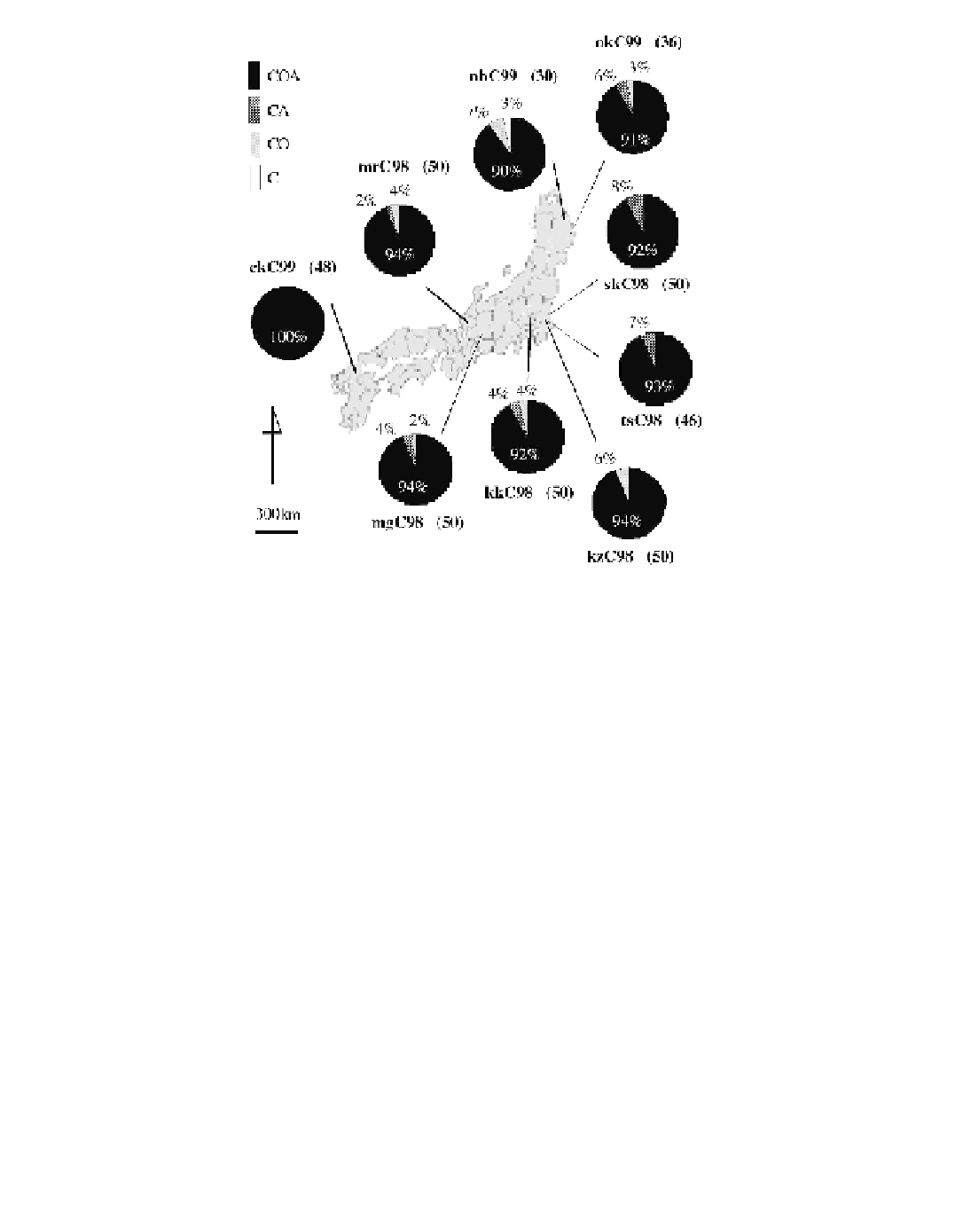Biology Reference
In-Depth Information
FIGURE 18.4
Infection states with the three
Wolbachia
strains in Japanese local populations of
C. chinensis
.
Infections with wBruCon, wBruOri, and wBruAus, respectively, were detected by PCR using highly speciÝc
primers for their
wsp
genes. Numbers in parentheses after population names indicate the number of samples
examined, including both males and females. [From Kondo, N., Ijichi, N., Shimada, M., and Fukatsu, T.
(2002a).
Mol. Ecol.
11:
167Ï180. With permission.]
dominant, whereas double infection (6.1%) and single infection (0.2%) were minor. Only two
types of double infection, CO and CA, and one type of single infection, C, were identiÝed. The
predominance of the triple infection was consistently observed in all nine Japanese populations
examined (Figure 18.4).
WHAT ARE THE THREE
STRAINS DOING
IN THE SAME HOST INSECT?
WOLBACHIA
The discovery of universal and stable infection with three distinct strains of
Wolbachia
in
C.
chinensis
Wolbachia
have on the host? Is there any functional differentiation between them? What reproductive and
transmission strategies do they adopt in the same host? How do the three
Wolbachia
localize in the
same host body? Is there any interaction/competition/conÞict among them? To answer these ques-
tions we investigated various biological aspects of the
Wolbachia
triple infection in
C. chinensis
.
prompted the following questions: What effects do the respective strains of
DIFFERENT LEVELS OF CI CAUSED BY THE THREE
WOLBACHIA
STRAINS
Using
C. chinensis
strains of different infection states, mating experiments were conducted to
examine whether or not wBruCon, wBruOri, and wBruAus cause CI
(Table 18.1).
In crosses



















